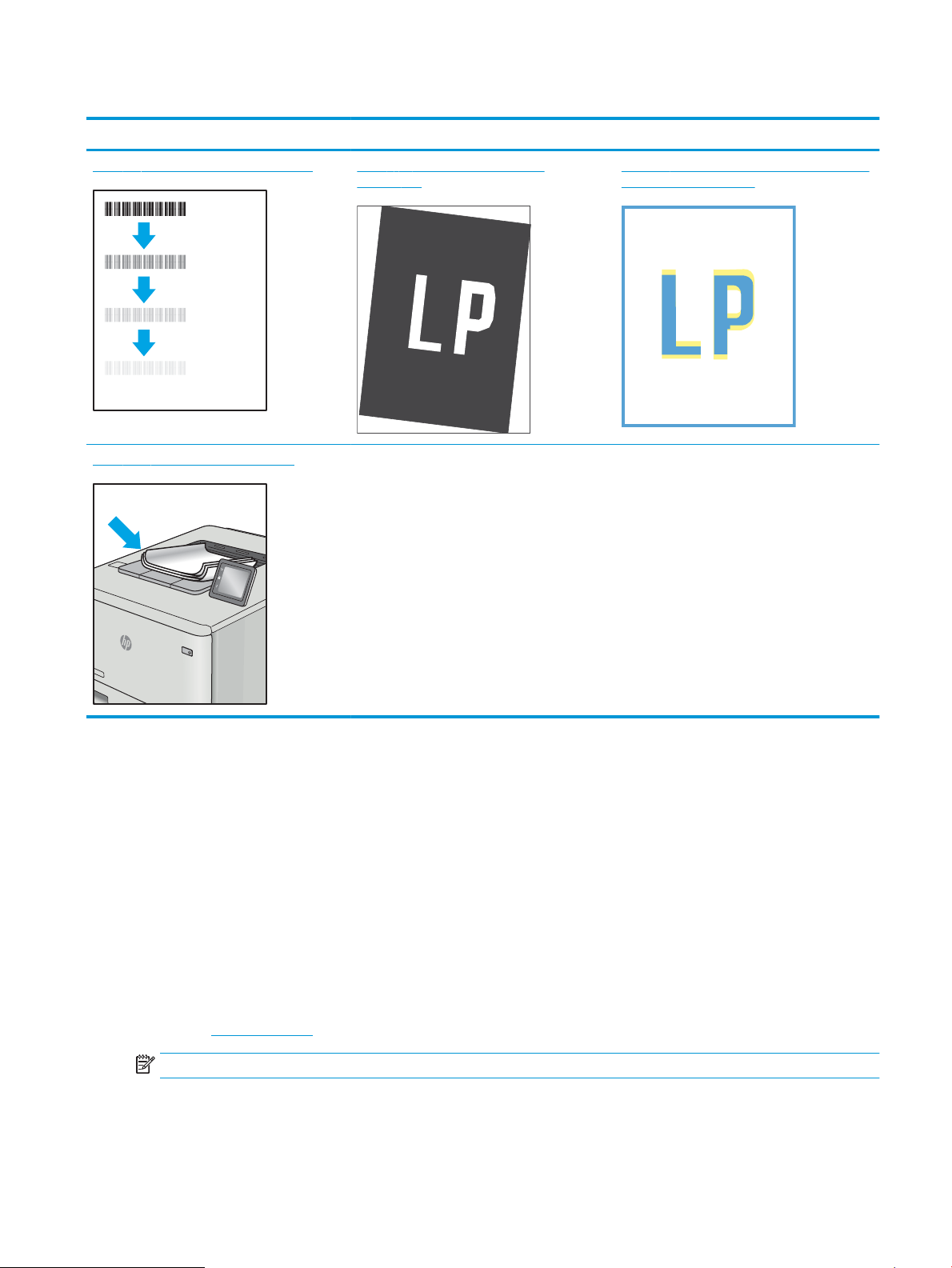Loading ...
Loading ...
Loading ...

Table 6-4 Image defects table quick reference (continued)
Defect Defect Defect
Table 6-9 Fixing/fuser defects on page 118 Table 6-11 Image placement defects
on page 119
Table 6-8 Color plane registrations defects (color
models only) on page 117
Table 6-13 Output defects on page 121
Image defects, no matter the cause, can often be resolved using the same steps. Use the following steps as a
starting point for solving image defect issues.
1. Reprint the document. Print quality defects can be intermittent in nature or can go away completely with
continued printing.
2. Check the condition of the cartridge or cartridges. If a cartridge is in a Very Low state (it has passed the
rated life), replace the cartridge.
3. Make sure that the driver and tray print mode settings match the media that is loaded in the tray. Try using
a dierent ream of media or a dierent tray. Try using a dierent print mode.
4. Make sure the printer is within the supported operating temperature/humidity range.
5. Make sure that the paper type, size, and weight are supported by the printer. See the printer support page
at support.hp.com for a list of the supported paper sizes and types for the printer.
NOTE: The term "fusing" refers to the part of the printing process where toner is aixed to paper.
The following examples depict letter-size paper that has passed through the printer with the short edge rst.
ENWW Resolving print quality problems 115
Loading ...
Loading ...
Loading ...